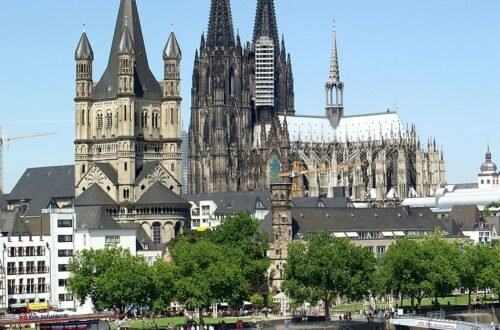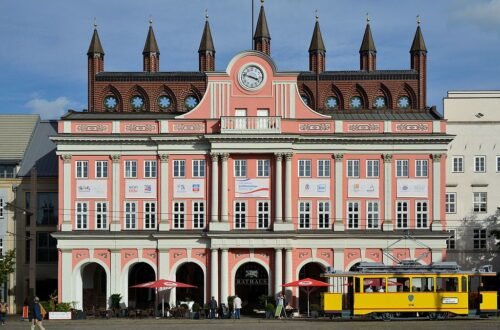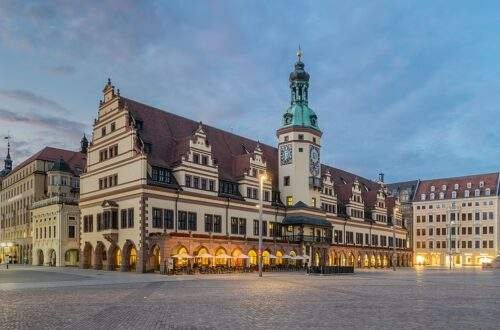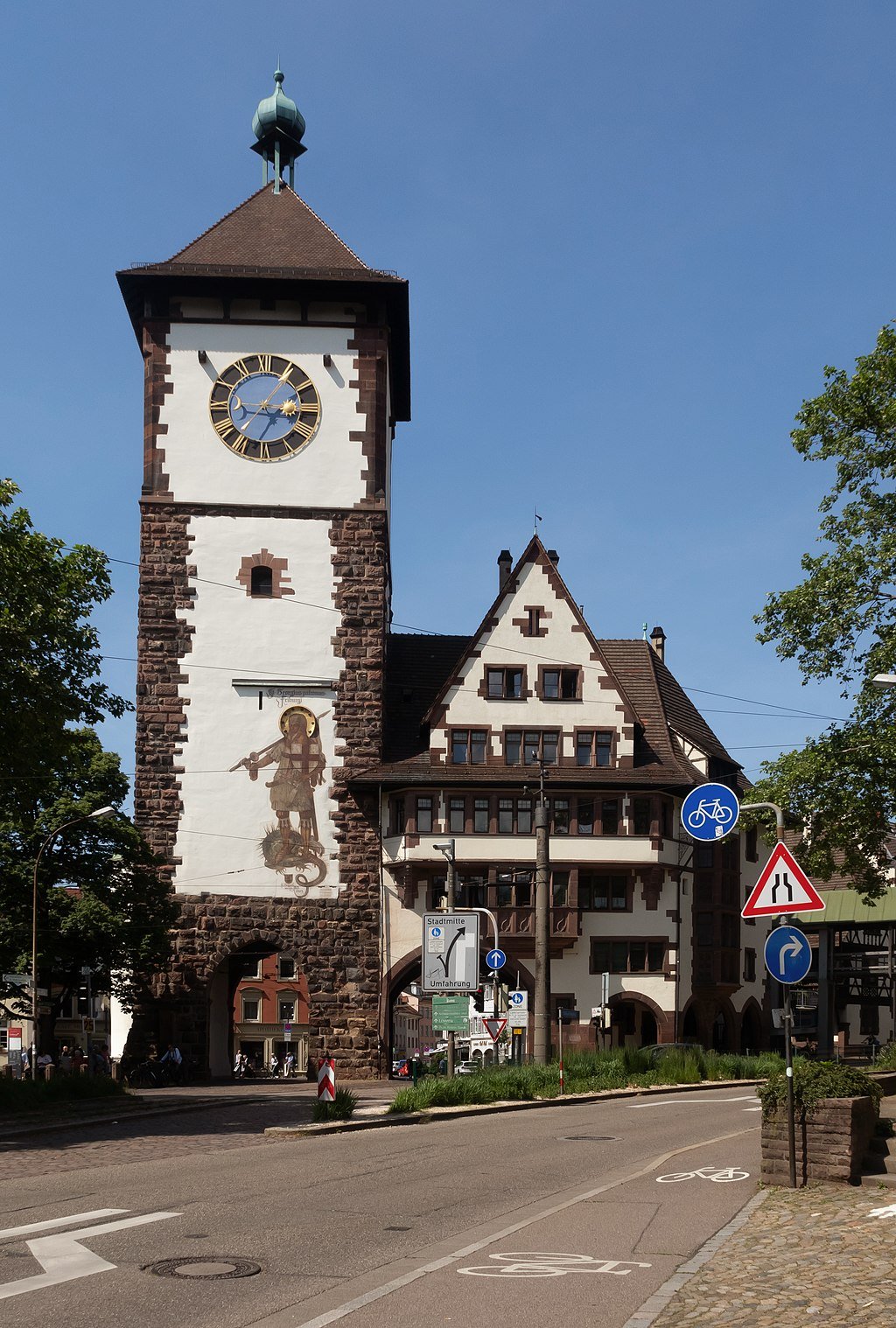
15 Best Things to See in Freiburg (Germany)
Freiburg, a medieval university city on the outskirts of the Black Forest, is located in Baden-Württemberg and is surrounded by vineyards. The Freiburg Minster must be the first thing you see, and you’ll want to view its Gothic wonder and its magnificent tower from all directions. The green movement began here in the 1970s, and it is one of Germany’s most livable cities. Today, Freiburg is one of the greenest cities on the planet and a bastion for the Green Party. The Black Forest may be entered from Freiburg, and a cable car can take you from the southern part of the city to the summit of the 1,284-meter Schauinsland mountain. Let’s look at the greatest activities in Freiburg:
- Augustiner Museum
- Freiburg Minster
- Schauinsland
- Freiburg Bächle
- Haus zum Walfisch (Whale House)
- Mundenhof
- Alter Friedhof (Old Cemetery)
- Münsterplatz
- Martinstor
- Markthalle
- Seepark
- Schlossberg
- Historical Merchants’ Hall
- Rathäuser
- Schwabentor
Augustiner Museum
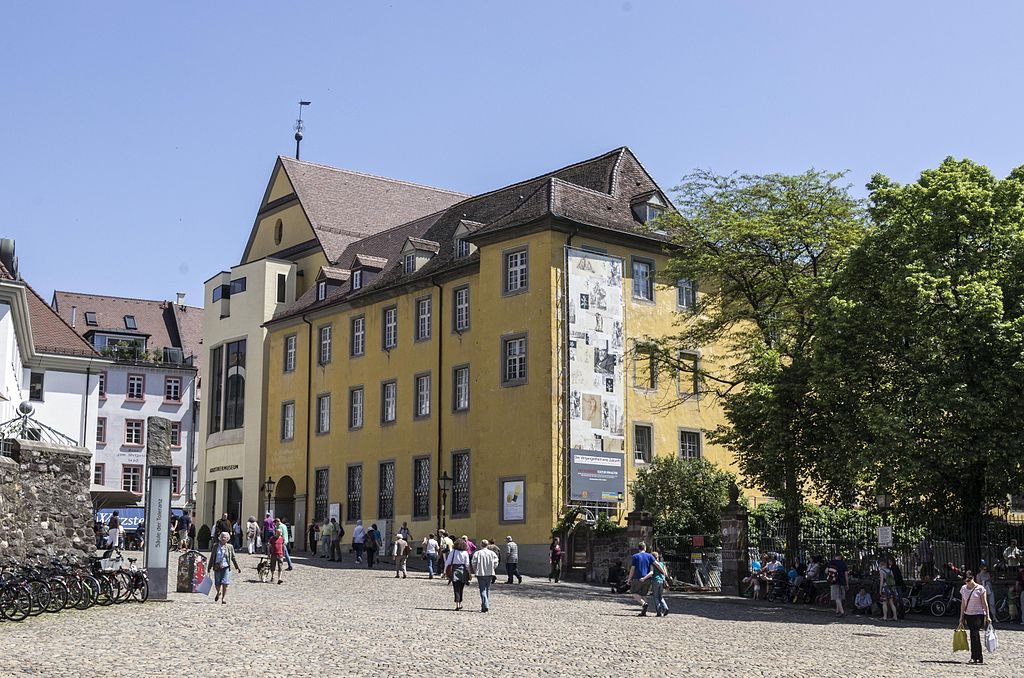
A former Augustinian convent on Augustinerplatz has been transformed into a chic gallery featuring works of art from the Middle Ages through the Baroque. Paintings from the Speyer Altarpiece by Master of the Housebook are displayed in the gallery upstairs together with works by German Renaissance masters like Matthias Grünewald, Lucas Cranach the Elder, and Hans Baldung Green. On two levels, authentic medieval stained glass from Freiburg Minster is on display. On the upper floor, a treasure trove of medieval wooden sculptures is also on display. The abbey church’s chancel is located downstairs and features solemn carved figures grouped in rows along the pillars, as well as Baroque sculptures, statuettes, paintings, and altars.
Freiburg Minster
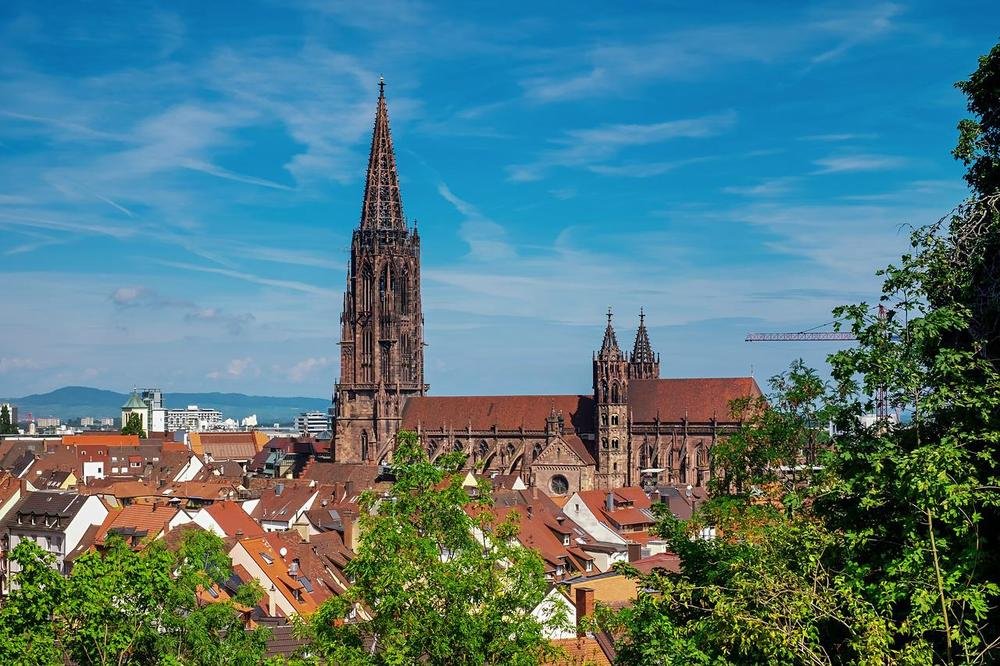
Freiburg’s magnificent cathedral took another three centuries to finish after beginning as a Romanesque church in the thirteenth century. In spite of the devastation caused near Münsterplatz in 1944, the cathedral sustained fairly slight damage. It’s difficult to dispute the Swiss historian Jacob Burckhardt’s claim that the 116-meter tower is the most beautiful in the entire world. The tower, which is a hollow, heavily adorned mass of tracery and pinnacles, was also the highest in the world for three years when it was finished in 1330. Amazing creativity can be seen just in the facade: At the end of the 1200s, 418 stone figures were carved into the tympanum and archivolts on the portal. View the Renaissance altarpiece by Hans Baldung Grien within and climb the tower to the observation terrace at 70 meters.
Schauinsland
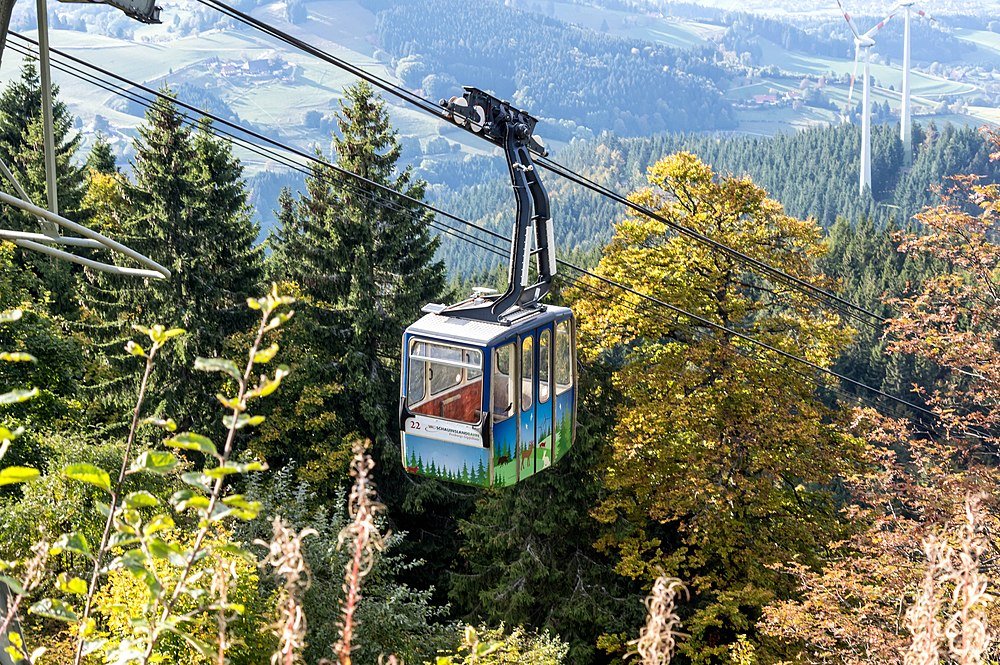
There is a Black Forest peak 1,284 meters high on Freiburg’s southern horizon. Only ten kilometres separate Schauinsland from the Old Town, and its cable car makes it a popular day trip. With a vertical elevation of more than 700 meters and a length of 3.6 kilometres, the Schauinslandbahn is the longest cable car in Germany. The average wait time for a cabin is less than a minute, while the climb to the summit takes 15 minutes. Although it operates year-round, the Schauinslandbahn does close down during inclement weather. From the mountain’s peak, you can see the rounded Vosges in the west and the angular northern Alps in the south.
Freiburg Bächle
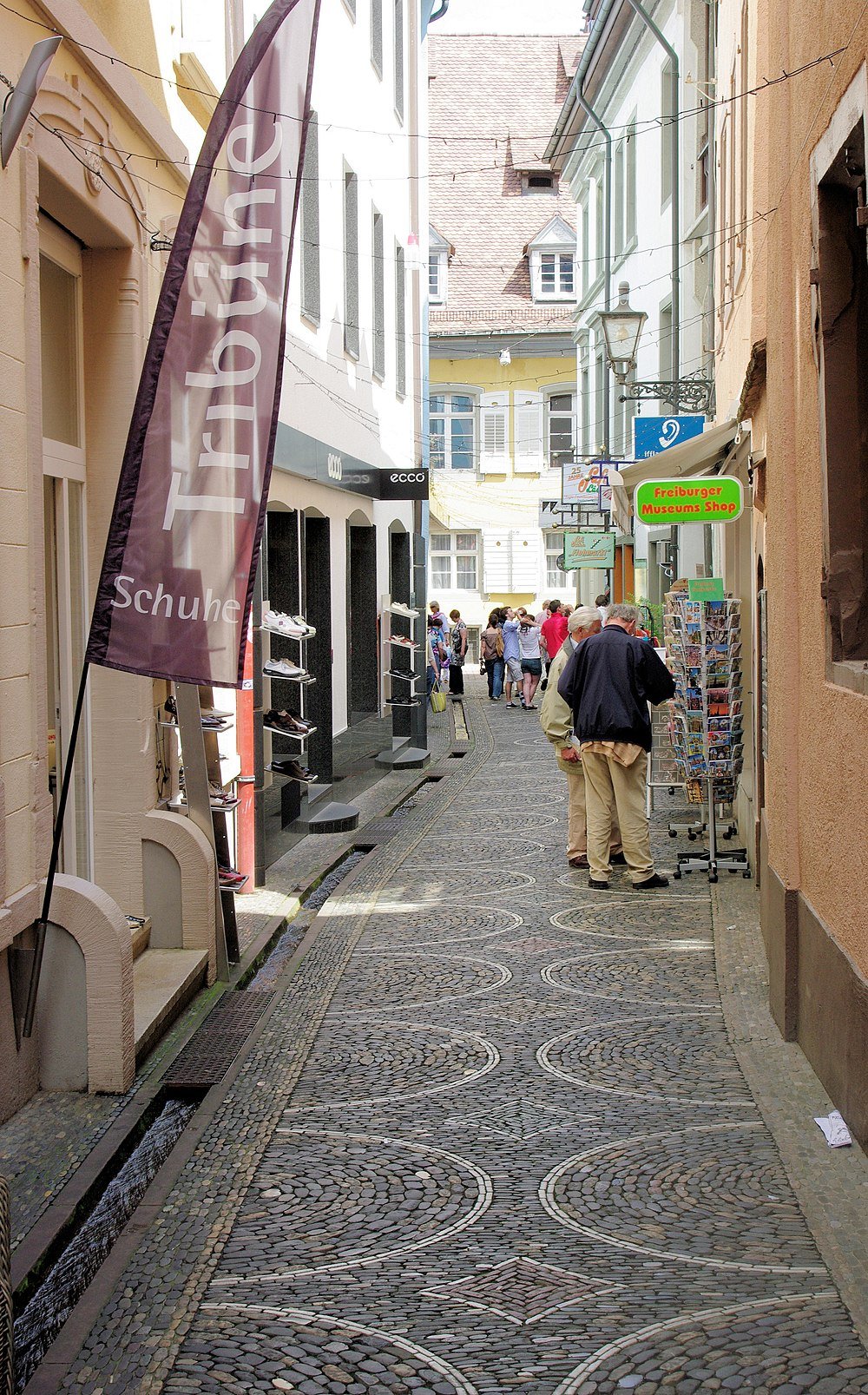
Any time you are in Freiburg, you must avoid one of the tiny streams that have cut their way through the Old Town. These are known as Bächle and are nourished by the Dreisam river. They were first mentioned in the 1200s, and during the Middle Ages, they had a few purposes, including putting out fires and supplying water to local craftspeople like tanners, but they were also open sewers. The total length of the network of channels is 15.5 kilometres, 6.4 of which are subterranean. They now serve as a charming city fixture and aid in summertime cooling. According to another urban legend, if you step into one by accident, you’ll wed a Freiburger.
Haus zum Walfisch (Whale House)
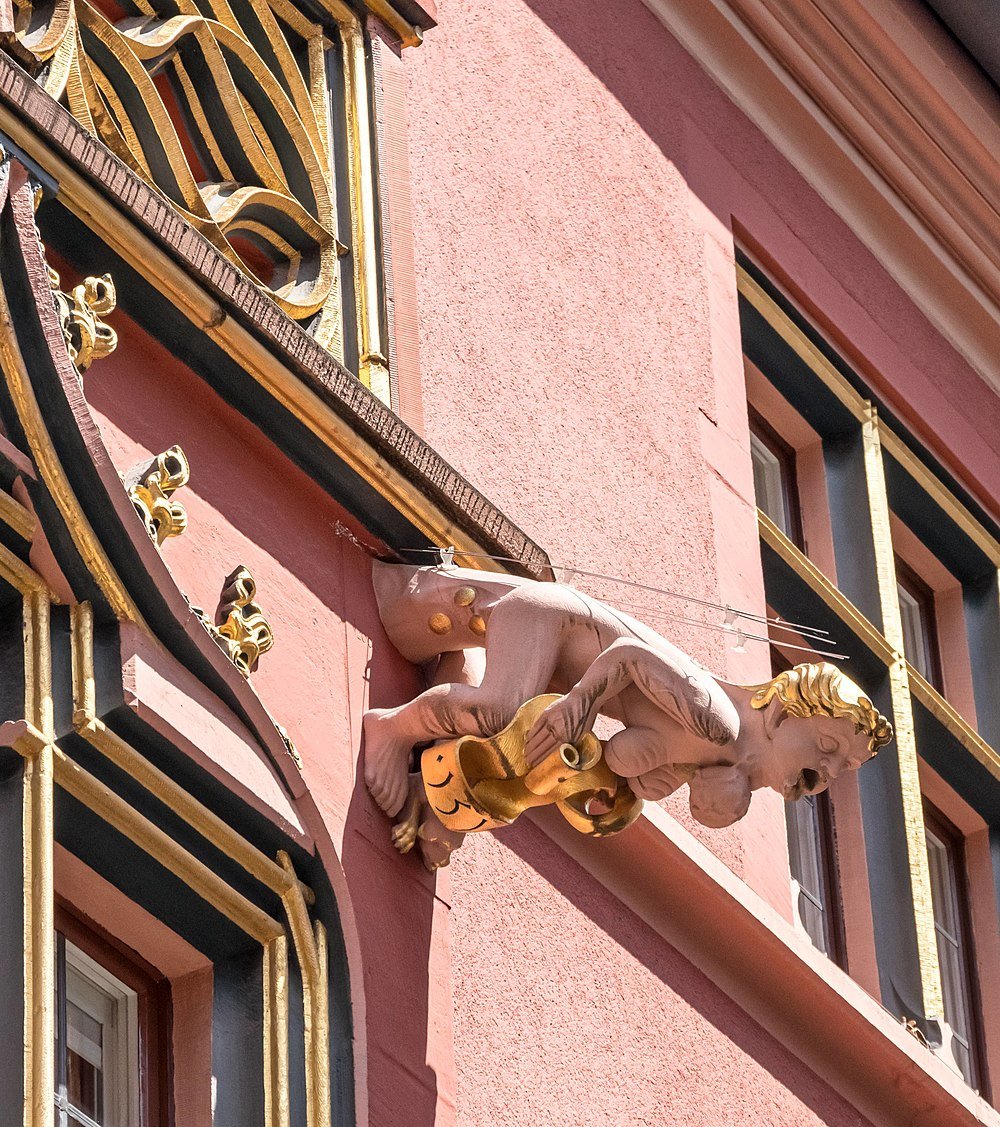
Then, Jakob Villinger von Schönenberg, who served as the Holy Roman Emperor’s grand treasurer, placed the order for this opulent early Renaissance home. The home dates back to the 1510s and hosted various notable figures throughout the following 100 years. The Dutch humanist Erasmus visited between 1529 and 1531, while Emperor Ferdinand I used the house around 1562–63. And if you happen to be a fan of art-horror director Dario Argento, you’ll know the Whale House as the setting for the dance school in Suspiria from 1977.
Mundenhof
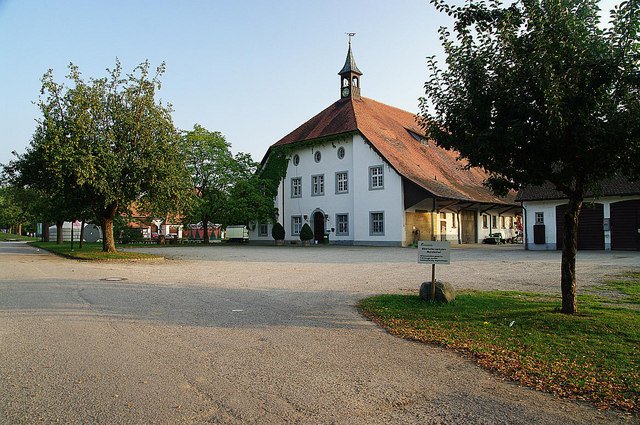
The largest animal park in Baden-Württemberg spans more than 38 hectares on a 9th-century manor. The Mundenhof was formerly agricultural land, but over the past 100 years, the city has purchased it and transformed it into a park. As a result, the park still retains a tranquil, rural atmosphere. The zoo, which started in 1968, is unique from others in that it is a non-profit organization that accepts donations in exchange for free admission. The majority of the animals are housed in open paddocks and are of native, domestic, and working species. However, there are also ostriches, alpacas, llamas, yaks, macaques, gibbons, and brown bears. A disused stable has been converted into an aquarium and terrarium, and in the summer, storks build their nests in the park.
Alter Friedhof (Old Cemetery)
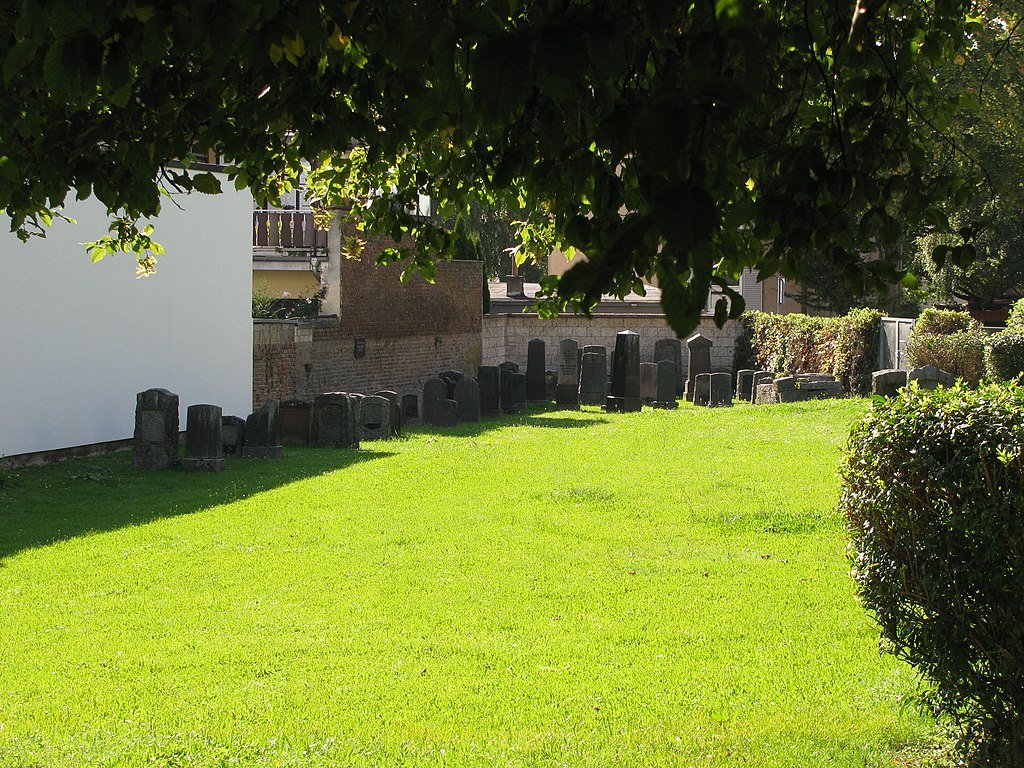
Johann Christian Wentzinger bequeathed the city on his land in 1797, with the one stipulation that his tomb in Freiburg’s Alter Friedhof be preserved for all time. Because of this, the cemetery, which was in use from 1683 to 1872, has mostly remained unaltered. Located on the northern edge of the Old Town, visiting here is equally as much a cultural activity as it is a peaceful nature walk. All of Freiburg’s affluent and aristocratic residents from the time are interred here, and their tombs and grave markers are masterpieces of Baroque and Neoclassical art. In addition to Wentzinger, you’ll run into historical figures like Mirabeau’s brother, Anselm Feuerbach’s father, and Felix Mendelssohn’s daughter-in-law.
Münsterplatz
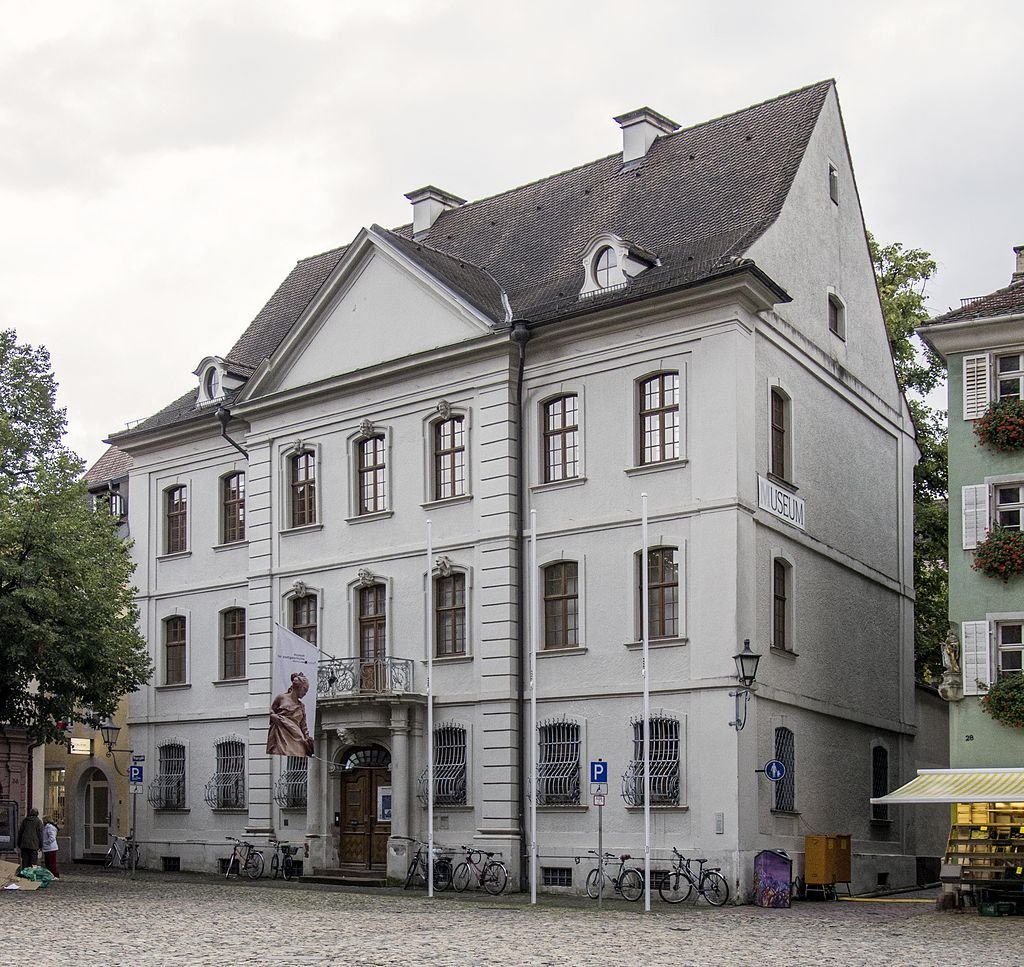
A pedestrian-friendly pedestrian square made of cobblestones surrounds the cathedral and is the site of a market that is open every day of the week except Sunday. The Wentzingerhaus, on the square’s southern edges, was one of the buildings that survived the bombings that nearly completely levelled the square in 1944, along with the cathedral. Johann Christian Wentzinger, a painter, sculptor, and architect, constructed this late Baroque palace in 1761. It presently houses a modest museum about the city. Regarding the market, there are 65 vendors on the south side and 96 on the north, selling anything from handicrafts to unusual spices. Snack shops providing freshly prepared food, such as a long, Freiburg-style wurst in a toasted bun, may be found at the foot of the cathedral.
Martinstor
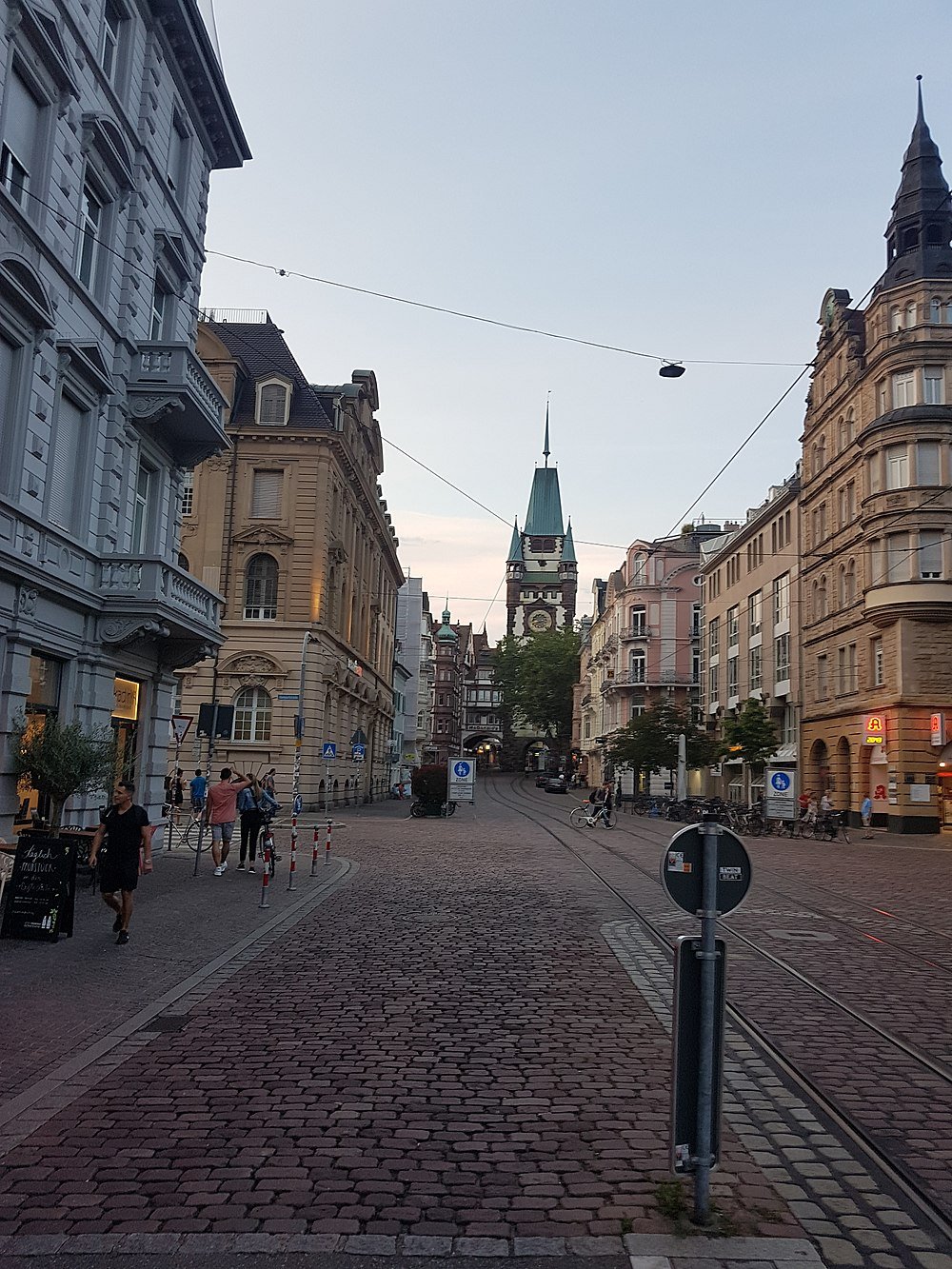
The older of the two city gates, which dates back to 1202, is located on the southwest edge of the Old Town. The Martinstor is first mentioned in a document from 1238, but a study of the wood revealed that it is actually a little older. The gate served as a focal point for the medieval walls, but it was rendered ineffective when Vauban, a French military engineer, reconstructed the city’s ramparts in the 1600s. The upper floors of the gate’s tower date from the turn of the 20th century and were covered with a roof in the Late Gothic style. The lowest third of the tower is entirely original. A memorial honouring the three women who were burnt as witches in the city in 1599 is located on the passageway’s city side, serving as a sombre reminder of the injustice of bygone times.
Markthalle
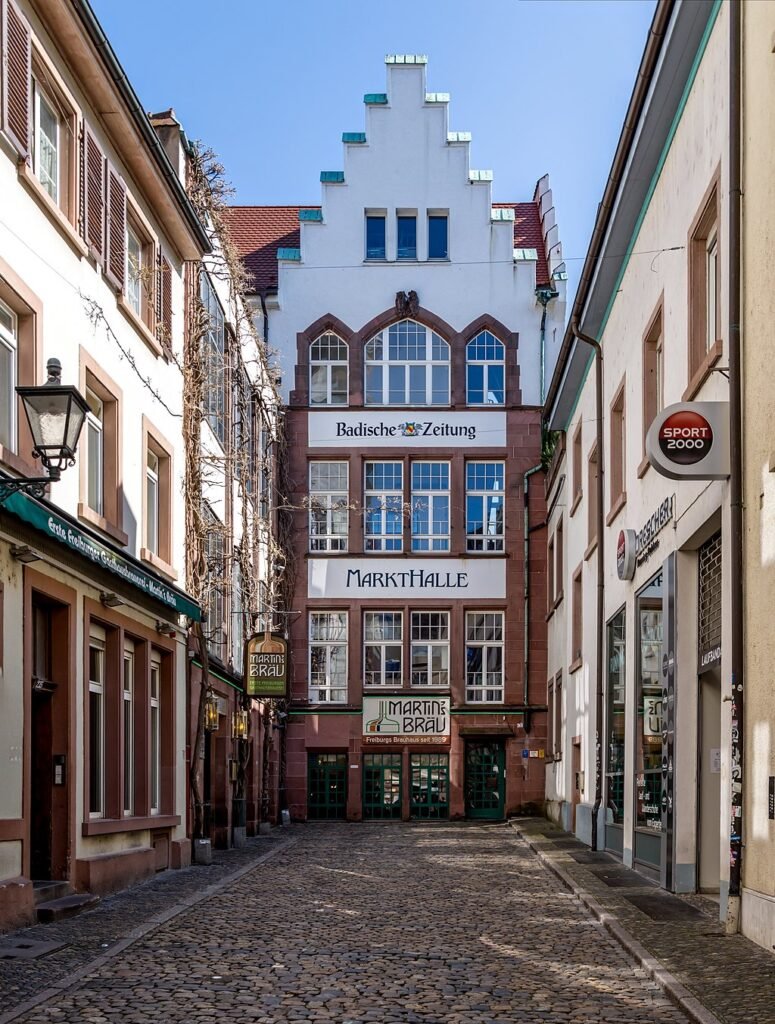
A culinary destination that may best be characterized as an international food court is located just around the corner from Martinstor. There are over 20 stalls preparing specialities from all over the world, so you can try Italian, Chinese, Argentine, Japanese, Indian, Brazilian, or Middle Eastern cuisine. You might perhaps choose something a little more regional, like Frikadellen (pan-fried meatballs) or wurst made in Freiburg, given you are in Germany. The champagne bar adds a festive atmosphere on weekend afternoons, and in the evenings the hall books live music and DJ sets.
Seepark
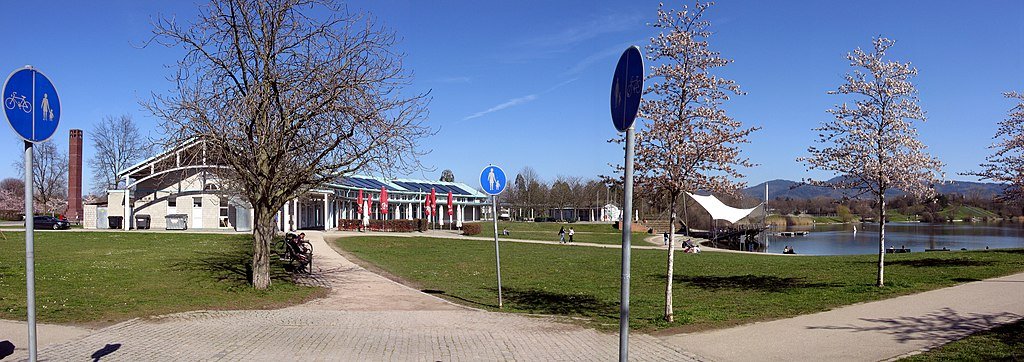
You’d never realize that you were standing in the heart of a gravel mine just 35 years ago at this 35-hectare park in the west of Freiburg. The Seepark was at the centre of Freiburg’s plans for the 1986 Landesgartenschau and began to take shape gradually in the early 1980s (Federal Garden Show). A lake occupies one-third of the park’s land, and in the summer you may rent pedal boats from its wharf. A 3,600-square-meter Japanese garden was built in 1990 as a representation of Freiburg’s collaboration with the city of Matsuyama. A mini golf course, a viewing tower, and an eco-station are all included in the Seepark’s amenities.
Schlossberg
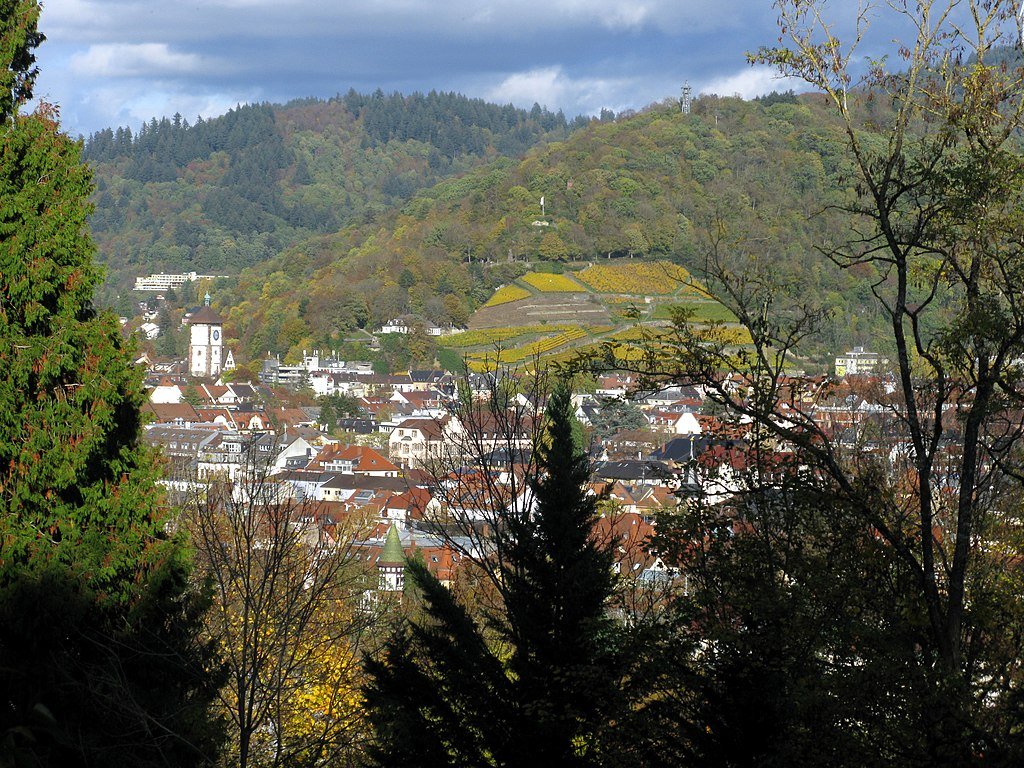
A 456-metre Black Forest hill guards Freiburg against the east. Schlossberg was fortified as a useful strategic location as early as the 1000s, and although these constructions are now in ruins, efforts have been undertaken to revive them. The 2008-opened Schlossbergbahn, a funicular railway that takes you in three minutes flat from the bottom of the slope to the top, is one of the biggest attractions today. The 2002-built Schlossbergturm, which offers a sweeping view of the city, is located at the peak. Additionally, if you continue along the line of defences to the southwest, you’ll find a picturesque terrace at Kanonenplatz from which you can see the cathedral across a vineyard.
Historical Merchants’ Hall
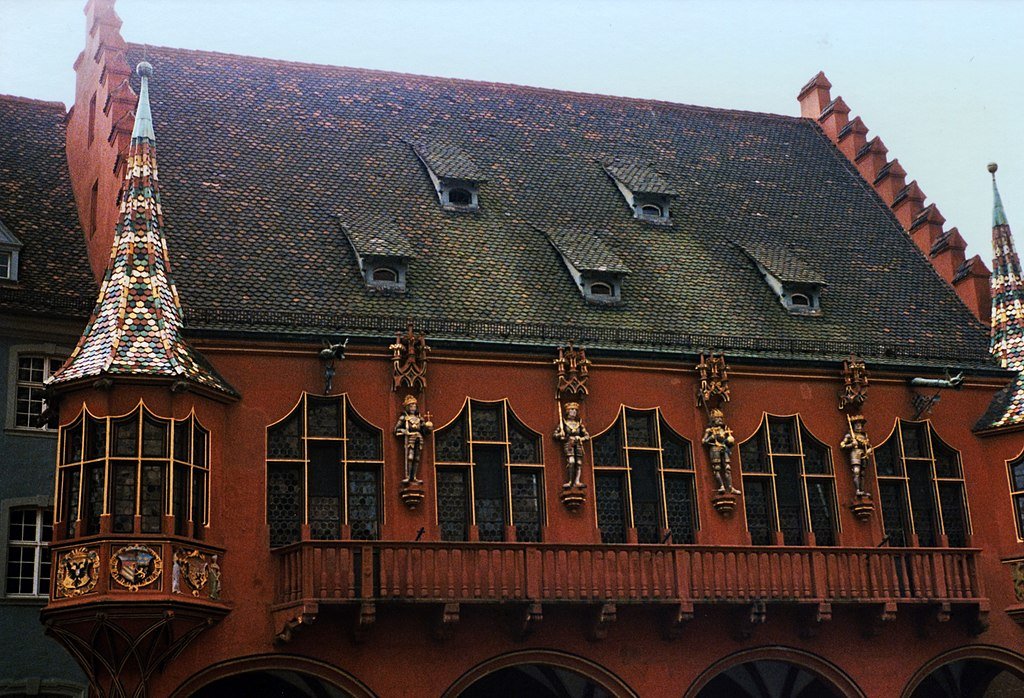
A stunning Renaissance structure built as a market storehouse may also be found on Münsterplatz’s south side. The hall is unmistakable thanks to its scarlet exterior and bay windows’ glazed patterned tiles. The structure dates from the early 1530s in its present shape, with crow-stepped gables and an arcade on the ground floor. Maximilian I, Charles V, Ferdinand I, and Philip I of Castile, Maximilian I’s son who died before his father and never became emperor, are all shown in the four statues above the access balcony on the facade. Check out the coats of arms of the five dominions ruled by the House of Habsburg beneath the bay windows. Hans Sixt von Staufen, a Renaissance carver, also carved the statues and these.
Rathäuser
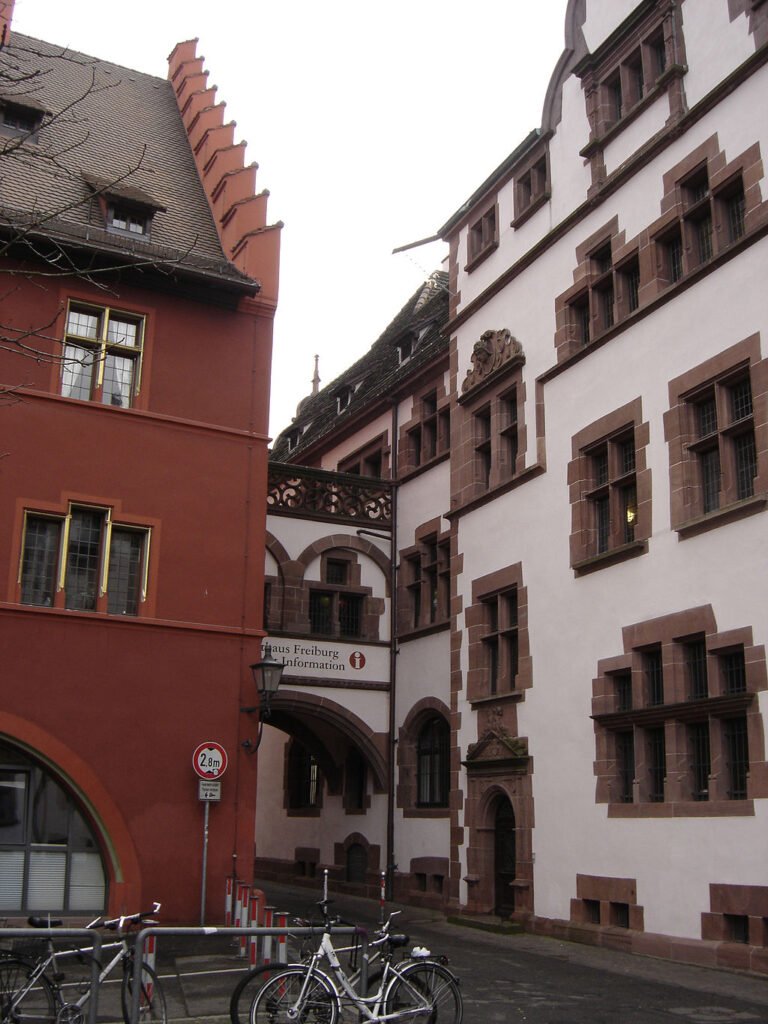
The magnificent Rathausplatz in Freiburg is home to both the New and Old Town Halls. The Old Town Hall, which dates from the end of the 1550s and is in the Renaissance style, is located on the north side. On the curved cable above the clock, you can make out the double eagle of the Holy Roman Empire, while Freiburg’s various ruling families down the years are honoured with coats of arms tracing the outline of the gable. You can visit Freiburg’s tourist information centre within the Old Town Hall. Next door is the New Town Hall, which is actually two Renaissance townhouses connected by an arcade rather than a brand-new structure. Come in at 12:00 when the linking section’s glockenspiel sounds.
Schwabentor
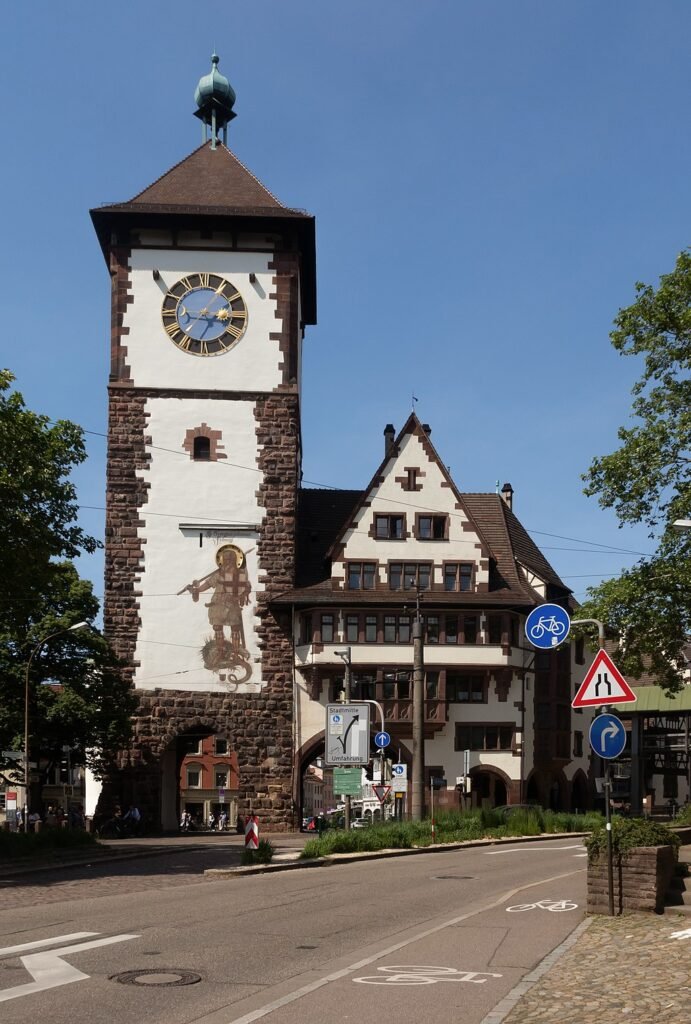
The younger of Freiburg’s two medieval gates were built in the middle of the thirteenth century and is not far from the Dreisam River’s oldest crossing. Red sandstone was used to construct the tower, which has three stories. The half-timbered additions and staircase tower date from a bit later, to the 16th century. A 1672 painting of a merchant in the Baroque style can be found on the town side. This quickly gave rise to a local legend about a merchant who attempted to purchase Freiburg with bags of what he believed to be gold, but which his wife had really substituted with sand and pebbles. A Romanesque carving of a boy holding a thorn, a design that dates back to Ancient Greece, is located above the keystone on the city side of the arch.


